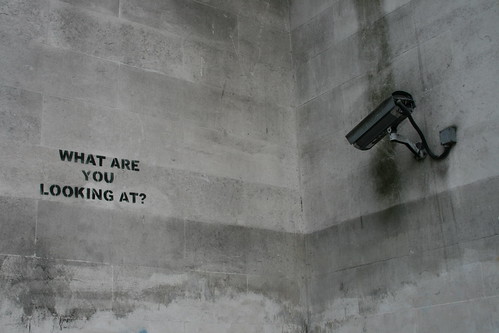 |
| Photo by Loïc Fürhoff on Unsplash |
The pandemic revealed cracks in the value of the campus and physical work spaces that are now being hastily papered over as most institutions revert to business as usual. But we have shown that courses can be successfully run online and staff are able to do most if not all of their work from home. Many staff and students are keen to continue working online, at least a few days a week. Some institutions are offering hybrid/hyflex teaching with students able to choose between online or on-site participation. They also allow staff to choose whether they wish to work from home or from the office, in agreement with their boss and colleagues. However, other institutions have reverted to campus-only teaching and insist on staff (usually administrative staff) being physically on campus.
This creates tensions. If a significant number of staff and students choose not to go to campus so often the sense of community offered by the campus is diminished. Management naturally want to make optimal use of their expensive and often recently built or refurbished campus facilities. They are caught in a difficult position where offering flexibility is clearly positive but will result in a sparsely populated campus that will become increasingly unattractive. At the same time forcing everyone back to campus will sow dissatisfaction and create negative publicity.
So what is the value of the physical campus and what is missing in the digital campus? This is discussed in an article by Jasmine Price, Donna Lanclos and Lawrie Phipps, COVID, Campus, Cameras, Communication, and Connection, in the Irish Journal of Technology Enhanced Learning. They interviewed students (undergraduates and post-graduates) about their learning experience during the pandemic and how they feel about returning to campus. The difficulties that arose during the terms of enforced home study are familiar from many other studies but the core of the article is about how the online experience has affected student attitudes to the physical campus. Online lectures work well, as do most administrative routines, but somehow the online environment lacks soul, presence, ambiance, a sense of fun, being part of something. These intangible factors are central to being able to identify as a student.We found that, for the students we spoke to, a return to campus implied access to fun, spontaneity and interaction with peers, lecturers, and other staff members. Even as students did talk about the flexibility that online places and platforms afforded them around attending lectures, and taking exams, they also highlighted their need for the physical spaces of the university campus to facilitate their focus, as key locations for group work (particularly important in undergraduate second years), and for socializing.The digital spaces work well for some things. Chat groups on Whatsapp and suchlike offer instant interaction and a sense of group identity, course material is always accessible and online meetings became valuable after an initial period of trial and error. However, the digital campus still lacks a sense of place and social interaction. The digital spaces are somehow fragmented and support services that are visible on campus are hidden online.
The digital campus, as yet still feels difficult and obscured for some students, lacking the well-established paths and cues that are familiar on a physical campus.For the digital campus to realize the potential and possibilities exhibited on the physical campus, universities need to find ways of enabling greater transparency so that students can tell where the pathways are to meet and engage with their peers, and with staff who can teach and otherwise support them. If we are going to continue to cycle through times when we are only in digital places for university education --and it looks like that is likely--we must find ways to make visible and accessible the entirety of the potential support network.
The students did not really miss the lecture halls and classrooms during the pandemic. That part worked well online. What they missed were the intangible assets of the campus - a sense of belonging.















_-_The_Pied_Piper_of_Hamelin_-_NG_1231_-_National_Galleries_of_Scotland.jpg)